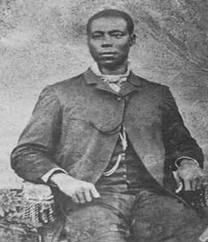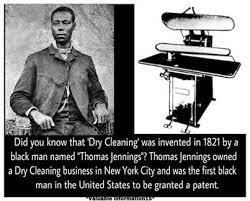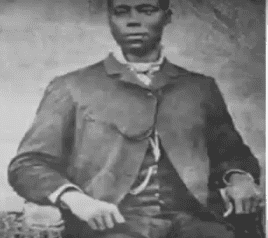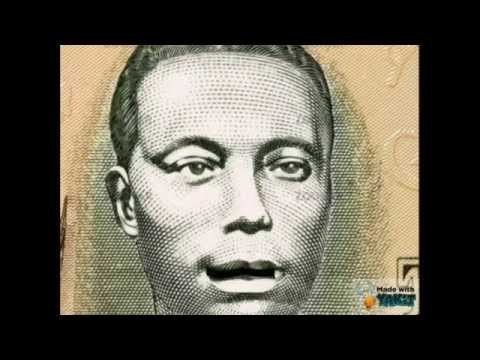Name Thomas Jennings | ||
 | ||
Died 1856, New York City, New York, United States | ||
Black History Everyday, Thomas L Jennings
THOMAS L. JENNINGS
Thomas L. Jennings (1791 – February 12, 1856) was an African-American tradesman and abolitionist in New York City, New York. He operated and owned a tailoring and dry-cleaning business, and, on March 3,1821, he was granted patent 3306x for a dry scrub process as the first African American to be granted a patent.
Contents
- Black History Everyday Thomas L Jennings
- THOMAS L JENNINGS
- Early life
- Career
- Patent controversy
- Civil Rights activism
- References

Jennings became active in working for his race and civil rights for the black community. In 1831, he was selected as assistant secretary to the First Annual Convention of the People of Color in Philadelphia, Pennsylvania, which met in June 1831. He helped arrange legal defense for his daughter, Elizabeth Jennings, in 1854 when she challenged a private streetcar company's segregation of seating and was arrested. She was defended by the young Chester Arthur, and won her case the next year.

With two other prominent black leaders, Jennings organized the Legal Rights Association in 1855 in New York, which raised challenges to discrimination and organized legal defense for court cases. He founded and was a trustee of the Abyssinian Baptist Church, a leader in the black community.

Early life

Thomas L. Jennings was born free to a free black family in New York City. As a youth, he learned a trade as a tailor, which included dry-cleaning. He built a business and married a woman named Elizabeth, who was born in 1798 in Delaware into slavery and died March 5, 1873. (Death Record NYC #cn 142327). Under New York's gradual abolition law of 1799, she was converted to the status of an indentured servant and was not eligible for full emancipation until 1827. Children born to slave mothers before 1827 were considered to be born free, but were required to serve apprenticeships to her master until they reached their mid to late 20s. He and his wife had three children: Matilda Jennings (b. 1824, d. 1886), Elizabeth Jennings (b. March 1827 d. June 5, 1901), and James E. Jennings (b. 1832). Matilda Jennings was a dressmaker and wife of James A. Thompson, a Mason. Elizabeth Jennings was the wife of Charles Graham, whom she married on June 18, 1860. James E. Jennings was a public school teacher.
Career

Jennings built a business as a tailor and dry cleaner, and was well-respected in the community. He developed a process called "dry scouring" for cleaning clothes, for which he applied and received a patent from the state of New York on March 3, 1821. He spent his early earnings on legal fees to purchase his wife and some of children out of slavery. Their daughter Elizabeth Jennings was born free in March 1827 and became a schoolteacher and church organist.

Jennings also supported the abolitionist movement and became active in working for civil rights of free blacks. He was active on issues related to emigration to other countries; opposing colonization in Africa, as proposed by the American Colonization Society; and supporting expansion of suffrage for black men.
Patent controversy

Jennings' success in gaining a patent resulted in a considerable amount of controversy. The U.S. patent laws of 1793 stated that "the master is the owner of the fruits of the labor of the slave both manual and intellectual," thus slaves could not patent their own inventions; the efforts would be the property of their master. However, Thomas Jennings, as a free man, gained exclusive rights to his process. In 1861 Congress passed a law to extend patent rights to slaves.
Civil Rights activism
Thomas Jennings was a leader in the cause of abolitionism and African-American civil rights. After his daughter, Elizabeth Jennings March 1827-June 5, 1901, was forcibly removed from a "whites only" streetcar in New York City, he organized a movement against racial segregation in public transit in the city; the services were provided by private companies. Elizabeth Jennings won her case in 1855. Along with James McCune Smith and Rev. James W.C. Pennington, her father created the Legal Rights Association in 1855, a pioneering minority-rights organization. Its members organized additional challenges to discrimination and segregation, and gained legal representation to take cases to court. A decade after Elizabeth Jennings won her case, New York City streetcar companies stopped practicing segregation.
